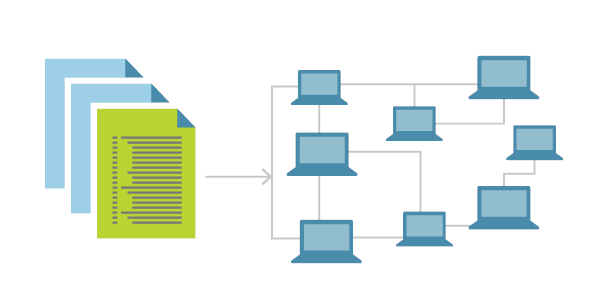What is infrastructure as code (IaC)?
Infrastructure as code (IaC) uses DevOps methodology and versioning with a descriptive model to define and deploy infrastructure, such as networks, virtual machines, load balancers, and connection topologies. Just as the same source code always generates the same binary, an IaC model generates the same environment every time it deploys.

IaC is a key DevOps practice and a component of continuous delivery. With IaC, DevOps teams can work together with a unified set of practices and tools to deliver applications and their supporting infrastructure rapidly and reliably at scale.
Avoid manual configuration to enforce consistency
IaC evolved to solve the problem of environment drift in release pipelines. Without IaC, teams must maintain deployment environment settings individually. Over time, each environment becomes a "snowflake," a unique configuration that can't be reproduced automatically. Inconsistency among environments can cause deployment issues. Infrastructure administration and maintenance involve manual processes that are error prone and hard to track.
IaC avoids manual configuration and enforces consistency by representing desired environment states via well-documented code in formats such as JSON. Infrastructure deployments with IaC are repeatable and prevent runtime issues caused by configuration drift or missing dependencies. Release pipelines execute the environment descriptions and version configuration models to configure target environments. To make changes, the team edits the source, not the target.
Idempotence, the ability of a given operation to always produce the same result, is an important IaC principle. A deployment command always sets the target environment into the same configuration, regardless of the environment's starting state. Idempotency is achieved by either automatically configuring the existing target, or by discarding the existing target and recreating a fresh environment.
Helpful tools
Deliver stable test environments rapidly at scale
IaC helps DevOps teams test applications in production-like environments early in the development cycle. Teams can provision multiple test environments reliably on demand. The cloud dynamically provisions and tears down environments based on IaC definitions. The infrastructure code itself can be validated and tested to prevent common deployment issues.
Use declarative definition files
IaC should use declarative definition files if possible. A definition file describes the components and configuration that an environment requires, but not necessarily how to achieve that configuration. For example, the file might define a required server version and configuration, but not specify the server installation and configuration process. This abstraction allows for greater flexibility to use optimized techniques the infrastructure provider supplies. Declarative definitions also help reduce the technical debt of maintaining imperative code, such as deployment scripts, that can accrue over time.
There's no standard syntax for declarative IaC. The syntax for describing IaC usually depends on the requirements of the target platform. Different platforms support file formats such as YAML, JSON, and XML.
Deploy IaC on Azure
Azure provides native support for IaC via the Azure Resource Manager model. Teams can define declarative ARM templates using JSON syntax or Bicep to specify the infrastructure required to deploy solutions. Third-party solutions like Terraform through specific Azure providers are also available.